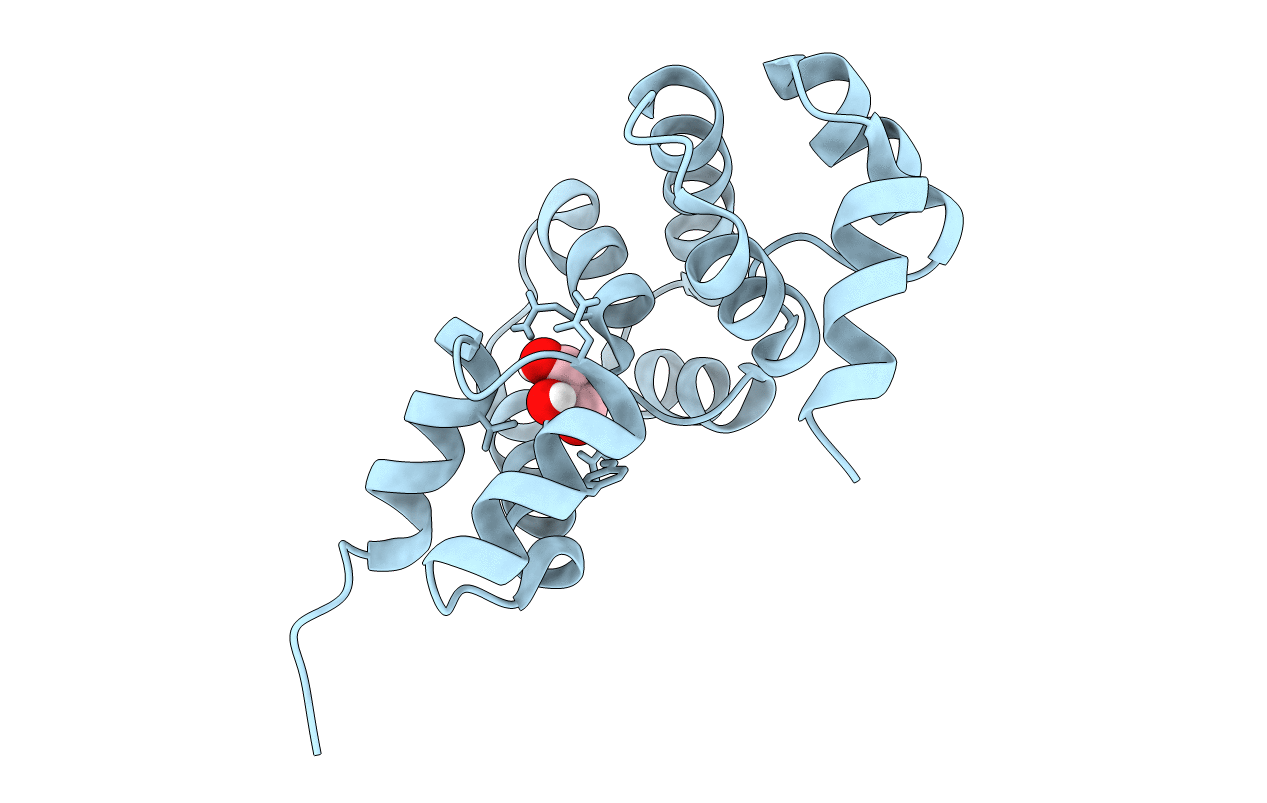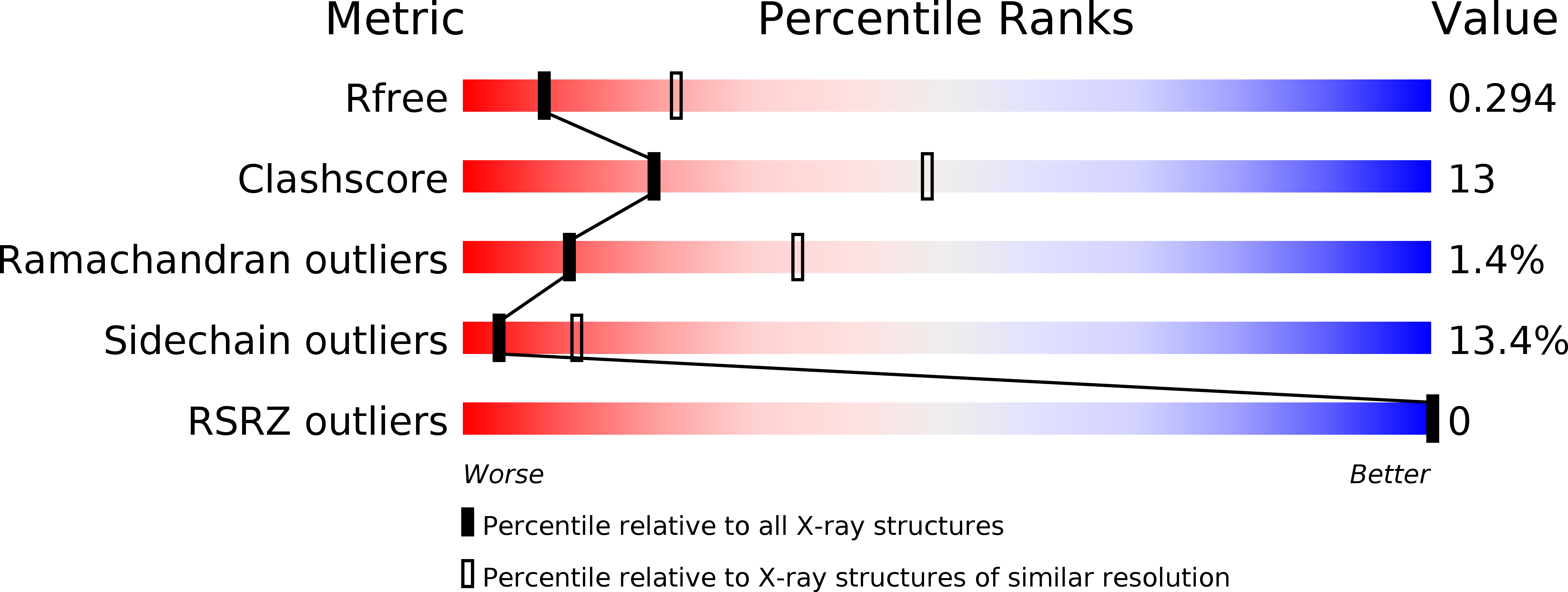
Deposition Date
2016-02-19
Release Date
2017-03-08
Last Version Date
2024-01-10
Entry Detail
PDB ID:
5I8L
Keywords:
Title:
Crystal structure of the full-length cell wall-binding module of Cpl7 mutant R223A
Biological Source:
Source Organism:
Streptococcus phage Cp-7 (Taxon ID: 10748)
Host Organism:
Method Details:
Experimental Method:
Resolution:
2.80 Å
R-Value Free:
0.28
R-Value Work:
0.20
R-Value Observed:
0.20
Space Group:
P 21 21 21


